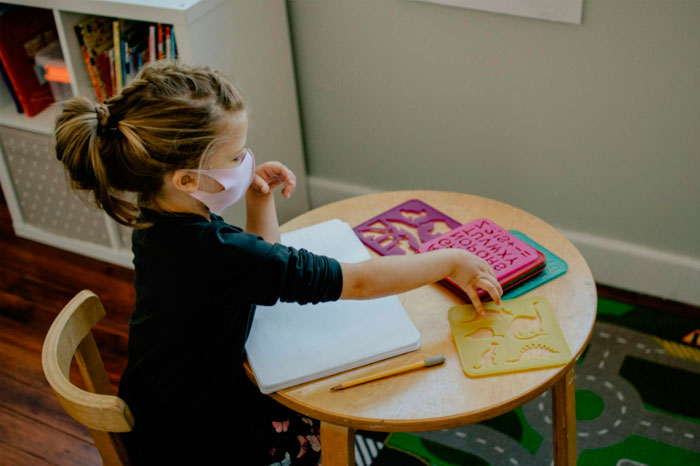Creating neurodiverse friendly learning environments isn’t just about accommodations. By recognizing and embracing a range of cognitive styles, educators can create spaces that support all learners. Traditional classroom setups often overlook needs that affect focus, comfort, or emotional well-being.

With thoughtful designs, open communication, and practical strategies, Lindsay Malanga showcases how classrooms can become places of empowerment. Small changes like using flexible seating or visual schedules can make a big difference, as can larger shifts in mindset and routine. When students feel safe and understood, their confidence grows alongside their academic success.
Understanding Neurodiversity in Learning Environments
Neurodiversity refers to the natural variation in how people think, learn, and process information. This includes individuals with autism, ADHD, dyslexia, and other cognitive differences. In learning settings, these differences can influence how students engage with materials, communicate with peers, and respond to their surroundings.
Recognizing neurodiverse learners as part of the broader student population helps shift the focus from deficits to strengths. Rather than expecting all students to adapt to a single way of learning, more educators are embracing flexible approaches that meet a range of needs. A student with dyslexia might thrive with audio-based materials, while someone with ADHD may benefit from breaks during lessons.
As awareness grows, many schools are working to make classrooms more inclusive by rethinking traditional practices. When schools prioritize equity in learning styles, the ripple effect benefits teachers, learners, and the broader community alike.
Barriers Neurodiverse Learners Often Encounter
Traditional classrooms can sometimes overwhelm students with sensory sensitivities. Bright fluorescent lights, constant background noise, and crowded seating arrangements may cause discomfort or distraction. These elements, often overlooked, can become daily obstacles that interfere with a student’s ability to focus or feel safe. In some cases, students may withdraw or act out as a response to this sensory overload.
Besides sensory overload, the structure of many classrooms can be rigid, with strict schedules or limited opportunities for physical activity. A learner with ADHD may struggle to sit still for extended periods, while a student on the autism spectrum might find sudden transitions disorienting. These challenges can lead to frustration or disengagement if not addressed properly. Without support, students may develop negative associations with school settings.
Social interactions can also be difficult when the surroundings don’t account for different communication styles. A child who prefers quiet, one-on-one conversations might feel isolated in group-heavy settings. Gradually, these mismatches can affect a student’s confidence and willingness to participate, reinforcing feelings of exclusion. Encouraging peer education about neurodiversity can help create more understanding and inclusive classrooms.
Creating Atmospheres That Prioritize Safety
A sense of safety starts with predictability. When routines are clear and expectations are consistent, students can focus more on learning and less on managing uncertainty. Visual schedules, designated areas for belongings, and clearly labeled spaces help reduce anxiety and create structure. These tools act as anchors, especially during transitions or unfamiliar activities.
Physical safety also plays a role in comfort. Minimizing clutter, offering soft seating, or having a quiet corner can make a space feel more welcoming. A calming area with soothing colors or gentle lighting can give students a place to regroup if they feel overwhelmed. Access to these spaces reinforces a student’s sense of agency and self-care.
Equally important is emotional safety, built through relationships and a culture of respect. When educators respond with patience rather than punishment, and peers are taught to value differences, students are more likely to take academic and social risks. This kind of trust fosters a supportive learning backdrop where everyone feels they belong.
Designing Stimulating Yet Manageable Spaces
A well-designed classroom balances engagement with comfort. Sensory-friendly elements like adjustable lighting, soft textures, and calming color palettes can help reduce overstimulation. These features don’t need to be elaborate—sometimes, using natural light or adding a few soft furnishings can make a major difference. Even organizing materials neatly can contribute to a calm atmosphere.
Offering flexible seating arrangements allows students to choose what works best for their focus and comfort. Some may prefer standing desks, while others feel more at ease working in a bean bag or on a floor cushion. These options support autonomy and encourage self-regulation. Students who feel in control of their surroundings tend to engage more positively with their tasks.
Quiet zones or spaces for emotional regulation provide students with a retreat when they feel overwhelmed. Having access to noise-canceling headphones, visual timers, or gentle tactile tools can support focus and reduce stress during transitions or challenging tasks.
Encouraging Student Input and Adaptability
Listening to students’ experiences helps shape environments that genuinely meet their needs. A learner who struggles with noise might suggest wearing earbuds during independent work, while another may prefer dim lighting in specific parts of the room. Small accommodations like these can have a big impact when they reflect student voices. When students see their feedback in action, their sense of ownership over learning grows.
As students grow and change, so do their preferences. What worked in the fall may no longer be helpful by spring. Regular check-ins, classroom surveys, or open discussions create a culture of adaptability, where adjustments are part of the routine rather than a disruption.
Supporting Inclusive Practices with Practical Solutions
Inclusive design doesn’t have to come with a high price tag. Rearranging furniture to open up walkways or using color-coded storage bins for clarity can make spaces easier to navigate. Reusing materials creatively—like turning cardboard boxes into sensory stations—can be both fun and functional.
Collaboration is the glue that keeps everything together. When teachers, families, and specialists work together, solutions are more personalized and sustainable. A shared understanding of a student’s needs leads to consistent support across settings, reinforcing the sense of stability and care.
